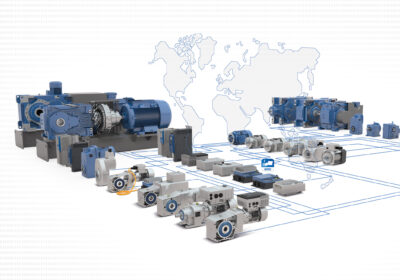~ Securing the UK’s energy supply with load bank testing ~
Renewable energy now makes up a record-breaking 47.8 per cent of the UK’s total energy generation, according to 2023 Government data. This figure is testament to the Government’s growing commitment to cleaner, more sustainable power solutions. But an increasingly renewable grid comes with its own set of challenges, primarily centred around grid stability and reliability. Here Andrew Keith, director of load bank manufacturer Power Prove, explains the technology involved in stabilising renewable energy generation and transmission.
As the UK Government looks to reduce its fossil fuel reliance as part of the British energy security strategy, almost half of the total energy generated in the first quarter of 2023 came from renewable sources. This is 2.4 per cent more than in the same period in 2022, with 1.2 gigawatts (GW) of new capacity from offshore wind projects and 0.9 GW from solar installations.
Dependability difficulties
Despite the UK Government’s recent decision to push back the sales bans on gas boilers and petrol and diesel vehicles, it still aims to reach its net zero target by 2050.
A major obstacle the UK faces is that wind and solar power are weather dependent. Our climate means that wind energy generation typically drops during the warmer months, but the increase in solar power generated during this period cannot sufficiently balance the shortfall. Although the total capacity of renewable projects increased by five per cent between the first quarters of 2022 and 2023, overcast weather and wind speeds below the 20-year average meant the increase in the energy generated was non proportional.
Not only does unpredictable weather make producing energy more difficult, but it also challenges the grid’s stability. The grid was designed with the power generation stability of gas and coal in mind and may not be able to handle the excess energy generated on particularly windy or sunny days. This surplus can cause the grid’s voltage to exceed 400,000 volts, which can make equipment malfunction, resulting in power outages and a less reliable energy supply to UK homes.
So, how can we tackle these issues to ensure our renewable energy output continues to flourish?
Increasing stability and reliability
An effective way of ensuring that the grid can handle energy fluctuations is with load bank testing.
Using a load bank allows engineers to simulate the electrical load that a renewable energy system, such as a wind or solar farm, will need to handle when connected to the grid. Carrying out testing before connecting the system to the grid allows engineers to determine its resilience under different operating conditions.

Load bank testing also enables engineers to gauge the maximum load the system can handle without overwhelming the grid. This is a key process in the commissioning of new renewable projects, as it limits the likelihood that the system will fail or falter during extreme weather events.
However, the need for load bank testing does not stop once the wind or solar farm is operational. A maintenance plan that includes regular testing is essential in identifying potential damage caused by voltage fluctuations before they disrupt the grid’s reliability.
Load bank testing for remote renewables sites
Offshore wind farms are often remote and difficult to access, making load bank portability key, both for pre-commissioning and when conducting routine maintenance. However, with many off-the-shelf load bank options, portability comes at the expense of load capacity. Given the high kilowatt requirements needed for renewable system testing, custom load banks are usually preferable, as they can be designed to offer higher capacity in a compact size, simplifying the testing process.
Power Prove has a wealth of experience in providing custom load banks for renewable energy generation projects, which can be used during commissioning, testing and maintenance.
This year’s record-breaking renewable energy production is a great step towards the UK’s goal of a more sustainable future, but we cannot afford to sit back. Tackling stability issues with load bank testing means we can have a grid that is both renewable and reliable.
To find the right load bank for your renewable application, get in touch with our team.








